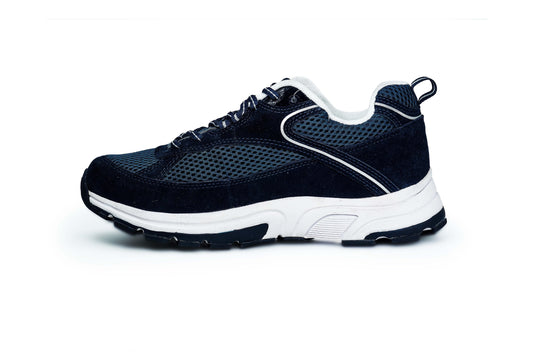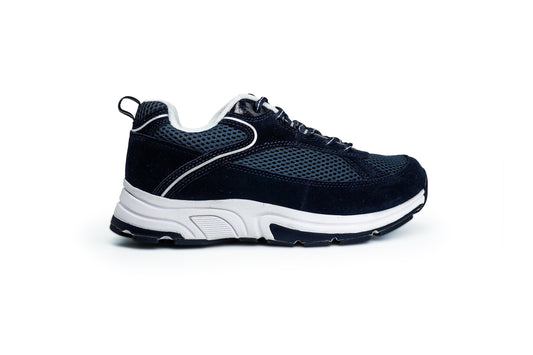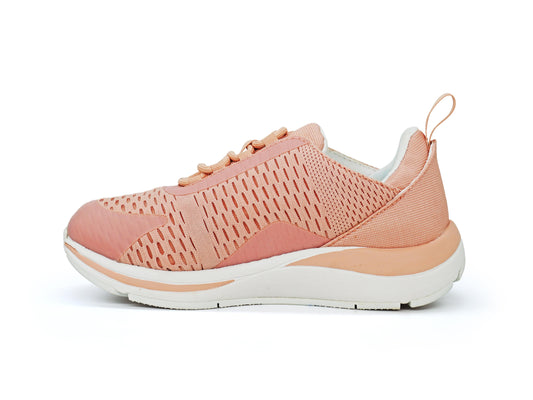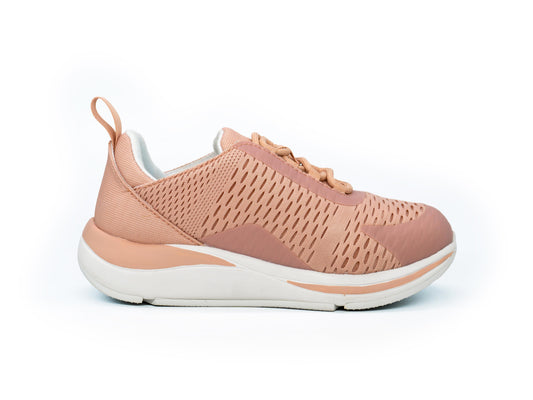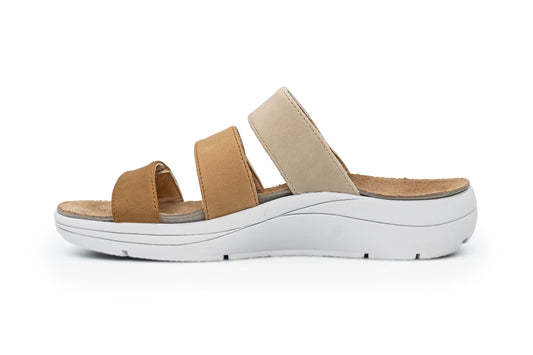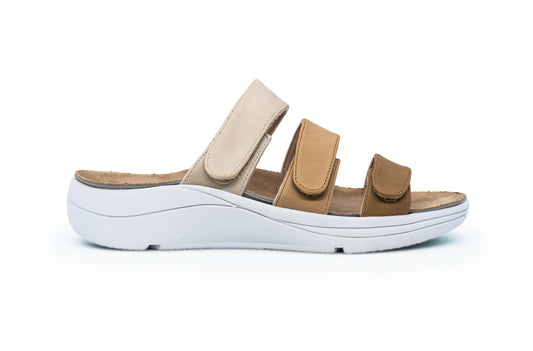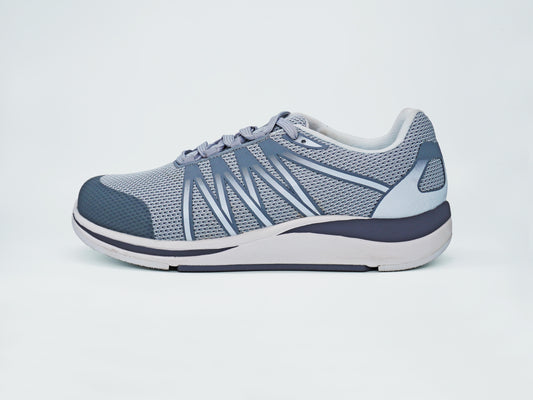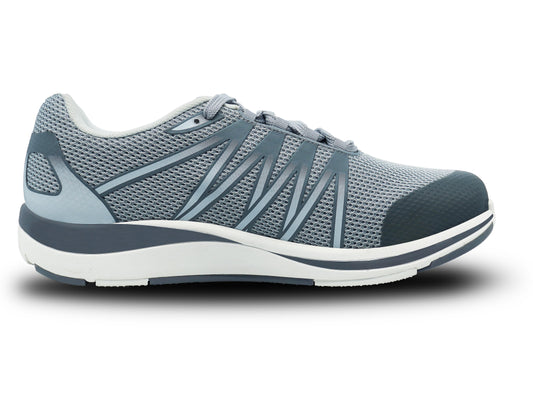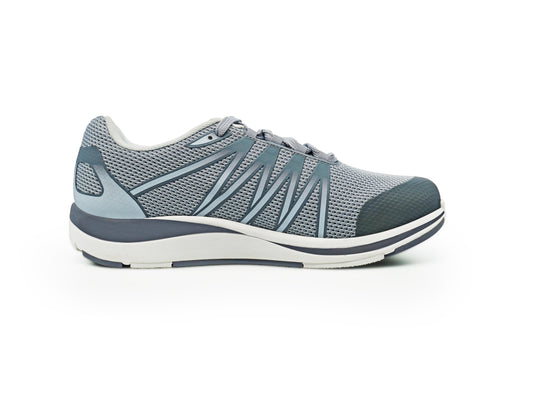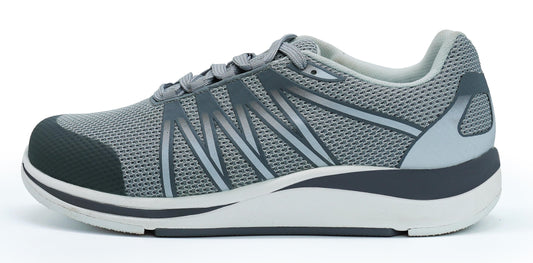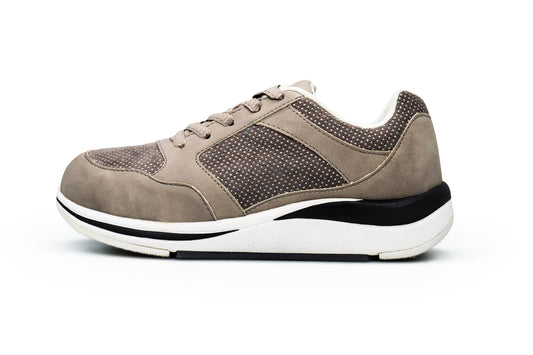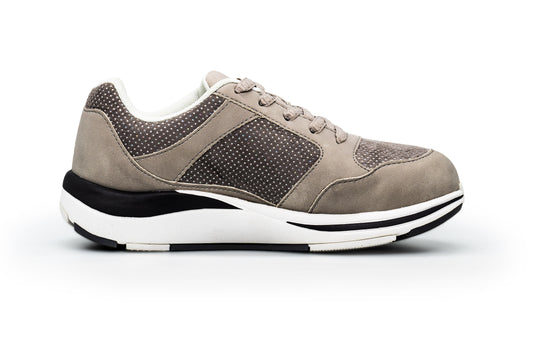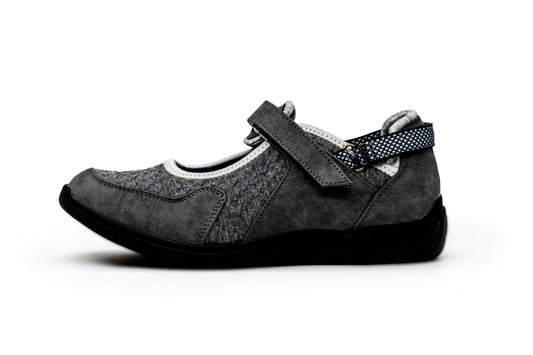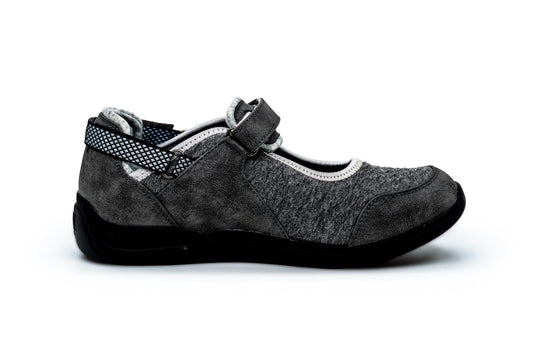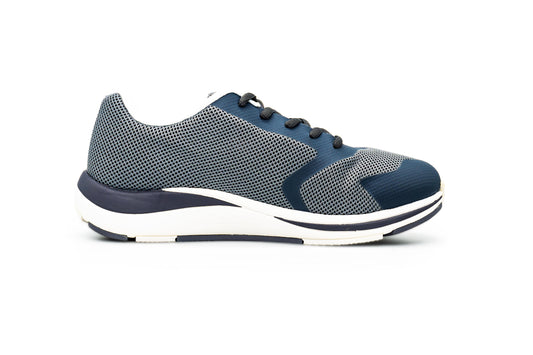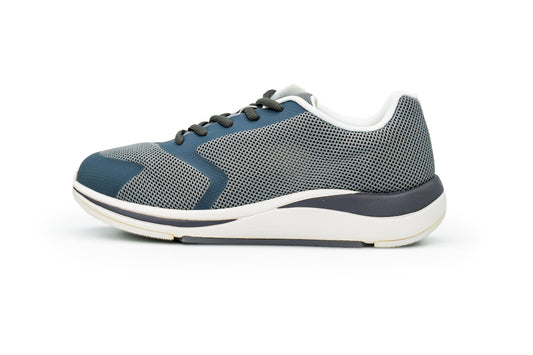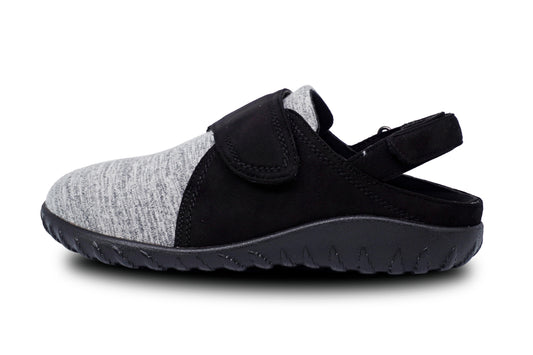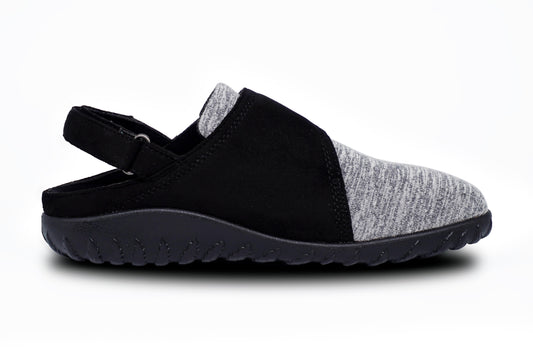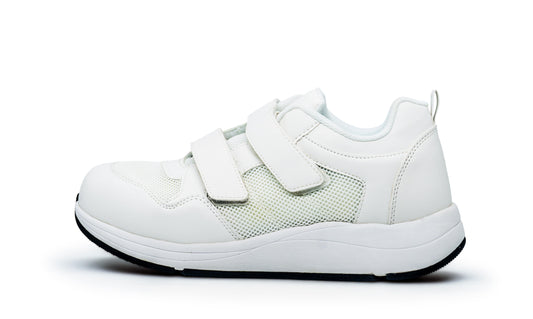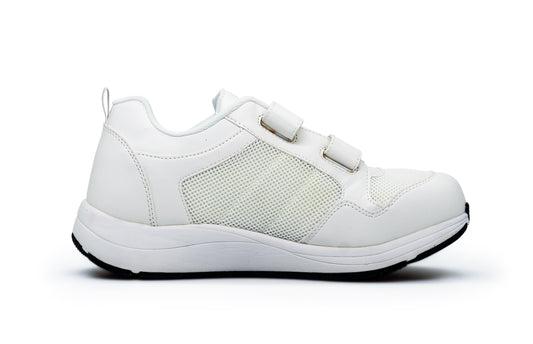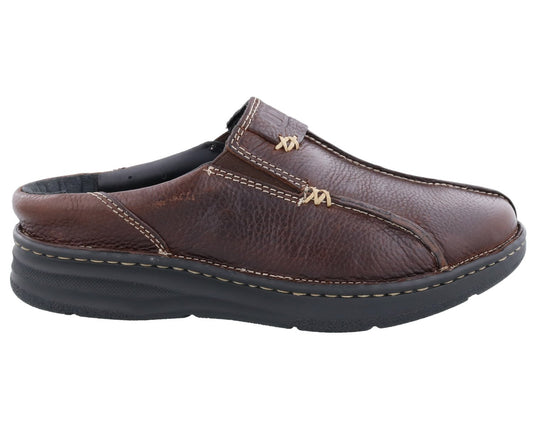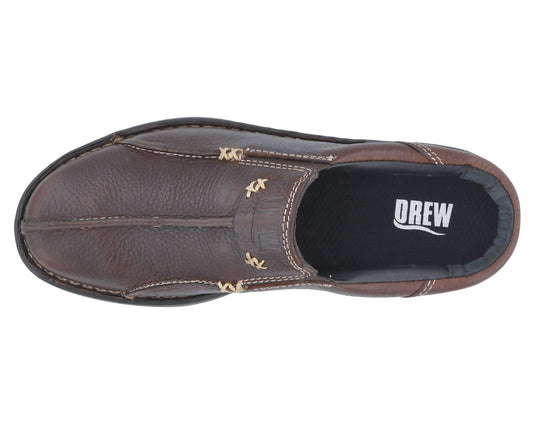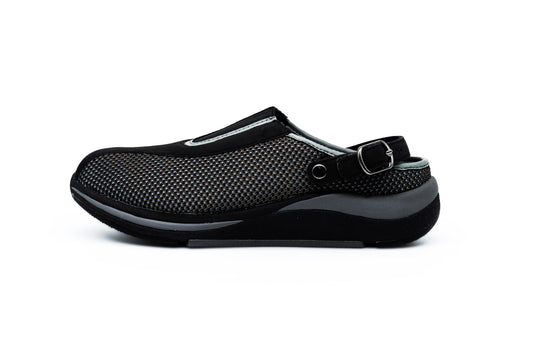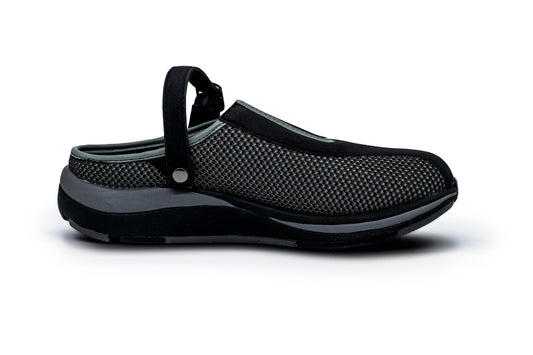-
Vendor: MENS
PLAYER Diabetic & Orthopedic Athletic Shoes - Mens - Grey Mesh
The men's Player offers Drew with Walk Right Technology™ and is engineered for protection and superior comfort and support only avaiable to buy at Diabetic Shoe India. A slip-resistant outsole will keep you on your feet. The high rebound EVA midsole provides shock absorption...- ₹ 10,795
₹ 11,995- ₹ 10,795
- Unit price
- / per
-
Grey Mesh
-
Vendor: WOMENS
SPRINTER Diabetic & Orthopedic Athletic Shoe Rose - Womens - Rose Combo
The Sprinter women's lace-up sneaker by Drew only available exclusively at Diabeticshoe.in features our Walk Right Technology Insole and is engineered for protection and superior comfort. A slip-resistant outsole will keep you on your feet. The high rebound EVA midsole provides shock absorption to...- ₹ 11,695
₹ 12,995- ₹ 11,695
- Unit price
- / per
-
Rose Combo
-
Grey Mesh Combo
-
Vendor: WOMENS
BALANCE Running Shoes - Womens - Grey Mesh
The Balance women's athletic shoe features our Walk Right Technology™ Insole and is engineered for protection and superior comfort. A slip-resistant outsole will keep you on your feet. The high rebound EVA midsole provides shock absorption to reduce foot and leg fatigue. Complete with...- ₹ 10,795
₹ 11,994- ₹ 10,795
- Unit price
- / per
-
Grey Mesh
-
Vendor: MENS
AARON Diabetic & Orthopedic Athletic Shoes - Mens - Navy Suede/Mesh
Walk in confidence knowing Drew Aaron only available exclusive at DiabeticShoe.in offers the proprietary Plus Fitting System® with two removable insoles plus all the therapeutic benefits Drew is famous for. With shock-absorbing inserts, flared outsoles, firm heel counters and Drilex® linings to wick away...- ₹ 11,695
₹ 12,995- ₹ 11,695
- Unit price
- / per
-
Navy Suede/Mesh
-
Vendor: WOMENS
CHIPPY Diabetic & Orthopedic Athletic Shoes - Womens - Grey Combo
Drew Chippy exclusively available at Diabetic Shoe India is our most popular casual shoes for women offers a great, new look for Drew. Chippy shoes are one of the industry's few walking shoes with double depth and two removable insoles that can accommodate prescribed...- ₹ 10,795
₹ 11,995- ₹ 10,795
- Unit price
- / per
-
Grey Combo
-
Vendor: WOMENS
BUTTERCUP Diabetic & Orthopedic Sandal - Womens - Grey Combo
The Drew® Buttercup available in India exclusively at DiabeticShoe.in is our best orthopedic shoe yet ! This popular women's shoe offers beautiful, detailed styling with the convenience and comfort of an adjustable hook and loop closure at the top of the foot with a detachable strap...- ₹ 11,695
₹ 12,995- ₹ 11,695
- Unit price
- / per
-
Grey Combo
-
Vendor: MENS
STABLE Diabetic & Orthopedic Walking Shoes - Mens - Grey Mesh
The name says it all. The Stable features our proprietary Drew with Walk Right Technology™ in a men's athletic sneaker/walking shoe with superior support and comfort. A slip-resistant outsole will keep you connected with the ground. The high rebound EVA midsole provides shock absorption...- ₹ 10,795
₹ 11,995- ₹ 10,795
- Unit price
- / per
-
Grey Mesh
-
Vendor: WOMENS
SAWYER Diabetic & Orthopedic Sandal - Womens - Blue Combo
Sawyer womens sandals by Drew® at DiabeticShoe.in combine an updated modern look with a hard-to-find removable insole. The removable Walk Right Technology™ footbed makes Sawyer one of the most comfortable women's sandals around! Featuring a lightweight outsole and three hook and loop adjustable straps,...- ₹ 8,995
₹ 10,995- ₹ 8,995
- Unit price
- / per
-
Blue Combo
-
Natural Combo
-
Vendor: WOMENS
BREEZY Slipper Footwear - Womens - Black Microsuede/Stretch
Exclusive textures and comfortable design is a smash success in the womens Breezy slip-on by Barefoot Freedom® by Drew® only available exclusive at DiabeticShoe.in. Adjustable hook and loop closure at the heel and vamp allow for a customized fit. Stretch fabric along with a supportive,...- ₹ 9,995
₹ 10,995- ₹ 9,995
- Unit price
- / per
-
Black Microsuede/Stretch
-
Vendor: MENS
CONTEST Diabetic & Orthopedic Sneaker- Mens - White Combo
The Contest by Drew men's double hook and loop sneaker is engineered for superior comfort exclusively available to buy from Diabetic Shoe India. A slip-resistant outsole will keep you sure on your feet. The high rebound EVA midsole provides shock absorption to reduce foot...- ₹ 10,795
₹ 11,995- ₹ 10,795
- Unit price
- / per
-
White Combo
-
Vendor: MENS
JACKSON Diabetic & Orthopedic Sandal - Mens - Brown Pebbled Leather
One step into this clog, and you'll feel like you're walking on clouds. Great-looking tumbled leathers make Drew® Jackson the most requested clog in the industry. available exclusive at DiabeticShoe.in These Drew men's shoes define quality, comfort, support and stability. Drew Jackson are fully...- ₹ 11,695
₹ 12,995- ₹ 11,695
- Unit price
- / per
-
Brown Pebbled Leather
-
Vendor: WOMENS
PURSUIT Slip-On Sneaker - Womens - Black Mesh Combo
Drew's Pursuit slip-on sneaker exclusively available at Diabetic & Orthopedic Shoe India for women is a multi-functional shoe designed with the utmost comfort in mind. Pursuit can be slipped on with ease and can be worn with or without the ankle strap. It's extremely...- ₹ 9,895
₹ 11,995- ₹ 9,895
- Unit price
- / per
-
Black Mesh Combo
Trending Now
Popular Products
Vendor:
MENS
AARON Diabetic & Orthopedic Athletic Shoes - Mens - Navy Suede/Mesh
Walk in confidence knowing Drew Aaron only available exclusive at DiabeticShoe.in offers the proprietary Plus Fitting System® with two removable insoles plus all the therapeutic benefits Drew is famous for. With shock-absorbing inserts, flared outsoles, firm heel counters and Drilex® linings to wick away...
- ₹ 11,695
₹ 12,995- ₹ 11,695
- Unit price
- / per
-
Navy Suede/Mesh
Vendor:
WOMENS
SPRINTER Diabetic & Orthopedic Athletic Shoe Rose - Womens - Rose Combo
The Sprinter women's lace-up sneaker by Drew only available exclusively at Diabeticshoe.in features our Walk Right Technology Insole and is engineered for protection and superior comfort. A slip-resistant outsole will keep you on your feet. The high rebound EVA midsole provides shock absorption to...
- ₹ 11,695
₹ 12,995- ₹ 11,695
- Unit price
- / per
-
Rose Combo
-
Grey Mesh Combo
Vendor:
WOMENS
SAWYER Diabetic & Orthopedic Sandal - Womens - Blue Combo
Sawyer womens sandals by Drew® at DiabeticShoe.in combine an updated modern look with a hard-to-find removable insole. The removable Walk Right Technology™ footbed makes Sawyer one of the most comfortable women's sandals around! Featuring a lightweight outsole and three hook and loop adjustable straps,...
- ₹ 8,995
₹ 10,995- ₹ 8,995
- Unit price
- / per
-
Blue Combo
-
Natural Combo
Pes Cavus (High Arch)
Pes Cavus is a term used to describe a foot with an arch that is too high. A high-arched foot is painful because additional stress is placed on unnatural places on the foot. This type of foot typically requires therapeutic footwear that can be modified to accommodate the arch. Shoes designed for pes cavus (high arches) offer specialized support and cushioning to reduce pressure on the ball and heel of the foot. These shoes typically feature enhanced arch support, shock-absorbing midsoles, and a contoured footbed to promote stability and comfort. Ideal for individuals experiencing foot pain, instability, or calluses due to high arches, pes cavus shoes help distribute weight more evenly and improve overall foot alignment. Suitable for daily wear, walking, or light activity, they provide relief and protection tailored to the unique needs of high-arched feet.
Drew footwear has added depth and double added depth for custom insoles or orthotics. Additional support is often required for the high-arch foot. Drew footwear has extended medial heel stabilizers, steel shanks and specially designed Lasts that help relieve high arch pain and allow for added walking stability.


Sidebar
Why Choose Orthopedic & Diabetic Shoes?
Orthopedic & diabetic shoes combine soft, seamless interiors with supportive orthotic technology to protect sensitive feet from blisters, pressure, and friction. With added depth, cushioned soles, and a roomy fit, these shoes provide relief while helping to prevent foot conditions commonly associated with diabetes.
Key Features:
- Seam-Free, Padded Interiors: Each shoe is designed with a seamless lining and extra padding to prevent irritation and friction, making them ideal for individuals with sensitive feet or neuropathy.
- Orthotic Insoles with Arch Support: Built-in orthotic insoles provide gentle arch support and improve foot alignment, helping to alleviate pain from common foot issues like plantar fasciitis and flat feet.
- Lightweight, Shock-Absorbing Soles: The cushioned soles absorb impact with each step, reducing pressure on the feet, knees, and lower back. This feature is especially beneficial for individuals with diabetes, as it helps prevent undue stress on the feet.
- Wide Toe Box and Extra Depth: Designed with a spacious toe box, Orthopedic & diabetic shoes allow natural toe movement and accommodate swollen feet or foot deformities, providing a comfortable, pressure-free fit.
- Adjustable Fit Options: Many styles feature adjustable closures, such as Velcro straps or laces, allowing for a personalized fit that accommodates swelling and provides extra stability.
- Reinforced arch support: Insoles are designed to support the arch, maintain proper foot alignment, and relieve pressure on joints.
- Firm heel counter: A stiff, supportive back section prevents the heel from sliding around in the shoe, which adds stability and motion control.
- Durable construction: These shoes are built to be sturdy and provide long-lasting support to the foot's structure.
- Soft, non-binding materials: The shoe's uppers are made from soft, flexible, and often stretchy materials that conform to the foot's contours and prevent constriction, which is important for circulation
- Breathable materials: Fabrics like leather and mesh promote air circulation, keeping the feet dry and reducing the risk of fungal infections.
- Protective, non-skid sole: The sturdy outsole shields the foot from sharp objects, and the non-slip design reduces the risk of falls.
- Adjustable straps: Hook-and-loop (Velcro) straps or laces allow for easy adjustments to accommodate fluctuations in foot swelling throughout the day
Benefits of Orthopedic & Diabetic Shoes:
Both orthopedic and diabetic shoes are therapeutic footwear designed to protecy and support the feet, but they serve different primary purposes. Orthopedic shoes correct biomechanical foot issues, while diabetic shoes are specifically engineered to prevent complications in diabetic patients who are prone to foot injuries and ulcers.
- Enhanced Foot Protection: Soft, seamless interiors and cushioned support protect sensitive feet from blisters, pressure, and irritation, promoting better foot health.
- Pain Relief and Stability: Orthotic insoles and ergonomic design provide the support needed to alleviate pain and ensure stability, reducing the risk of slips and falls.
- Long-Lasting Comfort: With shock-absorbing materials and a comfortable, supportive fit, Orthopedic & diabetic shoes offer the all-day comfort you need to stay active and pain-free.
- Improve support and alignment: They feature reinforced arch support, firm heel counters, and cushioned insoles that help maintain proper alignment of the feet and ankles. This also helps with issues like flat feet and high arches.
- Reduce pain: Orthopedic footwear is effective at relieving foot pain caused by conditions like plantar fasciitis, heel spurs, bunions, and arthritis. The extra cushioning helps absorb shock and minimizes pressure on sensitive areas.
- Enhance mobility: By providing stability and support, these shoes make it easier and more comfortable to walk, stand, and move. This is especially beneficial for those with arthritis, injuries, or other conditions that affect gait.
- Accommodate foot deformities: Features like wide toe boxes reduce friction and pressure on bunions and hammertoes, preventing discomfort and the condition from worsening.
- Distribute pressure: The design ensures that weight is evenly distributed across the foot, which reduces stress on joints and other key areas.
- Improve overall posture: By promoting better foot and ankle alignment, orthopedic shoes can have a positive effect on your posture, which in turn can relieve pain in the knees, hips, and back.
- Prevent foot ulcers: Diabetes can cause nerve damage that reduces sensation in the feet. A minor cut or blister can go unnoticed and develop into an ulcer. Diabetic shoes have seamless interiors and soft, non-binding uppers to eliminate friction and pressure points that can lead to skin breakdown and ulcers.
- Protect against injury: Stiff toe boxes and durable construction shield feet from accidental bumps or impacts, which is crucial for those with reduced sensation who might not feel an injury.
- Enhance circulation: Designed with extra depth and wide toe boxes, diabetic shoes promote healthy blood flow by preventing constriction. The reduced pressure on the feet helps improve circulation, which is often poor in individuals with diabetes.
- Accommodate foot deformities and swelling: The roomy design provides space for common diabetes-related foot changes, such as swelling, bunions, and hammertoes. Adjustable closures can accommodate daily fluctuations in foot size.
- Reduce risk of amputation: By preventing and managing foot injuries and infections, proper therapeutic footwear is a critical tool for reducing the risk of amputation associated with severe diabetic foot complications.
- Ensure optimal foot health: Regular use of diabetic shoes, along with daily foot checks and hygiene, is a key part of a comprehensive foot care plan for diabetics, leading to enhanced mobility and independence.
Ideal for Everyday Activities and Long Hours
Orthopedic & diabetic shoes are crafted to support you through any daily activity, from work to casual outings:
- Home and Daily Wear: Perfect for relaxing or light walking, these shoes keep your feet cushioned and comfortable all day.
- Errands and Social Outings: With a stylish yet practical design, Orthopedic & diabetic shoes allow you to stay active and look great without compromising on foot health.
- Protect your feet with Orthoshoes diabetic shoes, designed to provide gentle, reliable support and comfort for sensitive feet. Discover footwear that’s as protective as it is comfortable.
Shop the collection today and step into comfort and peace of mind!
FAQs
What is Pes Cavus?
Pes cavus is a condition where the arch of the foot is significantly higher than normal and remains elevated even when bearing weight. This is the opposite of a flat foot. It can occur in one or both feet and ranges in severity. The condition disrupts the foot's natural shock absorption and weight distribution, placing excessive pressure on the ball and heel of the foot.
What are the main causes of high arches?
Genetic factors: High arches can be an inherited trait with no associated health problems.
Neurological disorders: Conditions that cause muscle imbalances are a common cause. These include Charcot-Marie-Tooth disease, cerebral palsy, spina bifida, muscular dystrophy, spinal tumors, and stroke.
Injury or trauma: Fractures, nerve damage, or other traumatic injuries to the foot or ankle can lead to high arches.
What are the symptoms of Pes Cavus?
Pain in the feet, particularly in the heel and ball of the foot.
Instability and frequent ankle sprains, due to the heel tilting inward (known as heel varus).
Claw toes or hammer toes, where the toes are bent or curled.
Calluses and corns on the heel, ball, or outer side of the foot.
Difficulty finding shoes that fit comfortably.
How is Pes Cavus diagnosed?
Physical examination: The doctor will examine your feet, how you stand, and how you walk to assess the shape and flexibility of your arch. They may perform the Coleman block test to check if the hindfoot varus is flexible or rigid.
Medical history: The doctor will ask about your family history and overall health to help determine if there is an underlying cause, particularly a neurological one.
Imaging tests: X-rays or magnetic resonance imaging (MRI) may be used to evaluate the bones, joints, and soft tissues.
Neurological testing: If a neurological disorder is suspected, tests like an EMG (electromyography) or nerve conduction study may be ordered.
What are the treatment options for high arches?
Orthotics: Custom-made or over-the-counter shoe inserts can provide arch support, absorb shock, and help distribute pressure more evenly.
Proper footwear: Supportive shoes with good cushioning, a wide toe box, and firm heel support can help reduce pain and improve stability.
Physical therapy: A therapist can help with stretching and strengthening exercises to improve flexibility and correct muscle imbalances in the foot and leg.
Do high arches always require treatment?
No. Mild high arches that do not cause pain or instability may not require any treatment. However, if the condition is progressive (often linked to a neurological disorder), treatment is important to prevent increasing deformity. It is important to see a healthcare provider for a thorough evaluation to determine the cause and best course of action.
What is the long-term prognosis for Pes Cavus?
Progressive neurological conditions: If the high arches are caused by a progressive condition like Charcot-Marie-Tooth disease, the deformity will likely worsen over time, and ongoing treatment may be necessary.
Non-progressive or idiopathic cases: High arches that are inherited or result from a stable injury are less likely to worsen without treatment. Early intervention can effectively manage pain and prevent complications.
How does having high arches affect gait and biomechanics?
Weight distribution: When standing or walking, people with high arches put most of their weight on the heel and the ball of the foot, especially along the outer edge. This creates excessive stress and poor shock absorption.
Joint instability: Because the foot is less able to adapt to uneven surfaces, high arches can lead to instability and increase the risk of recurrent ankle sprains.
Progressive deformity: Over time, the unbalanced pressure and strain can lead to additional problems, including knee, hip, and back pain.
Where can these shoes be purchased?
They can be purchased directly and customised for your needs on our website. They are available in various designs suited for everyone.
Recently Viewed Products
- Choosing a selection results in a full page refresh.

